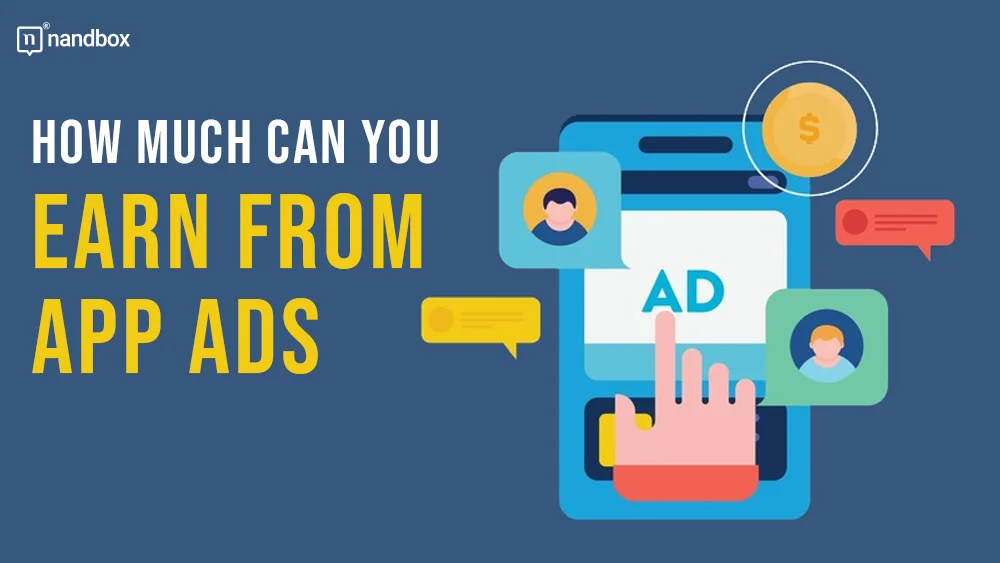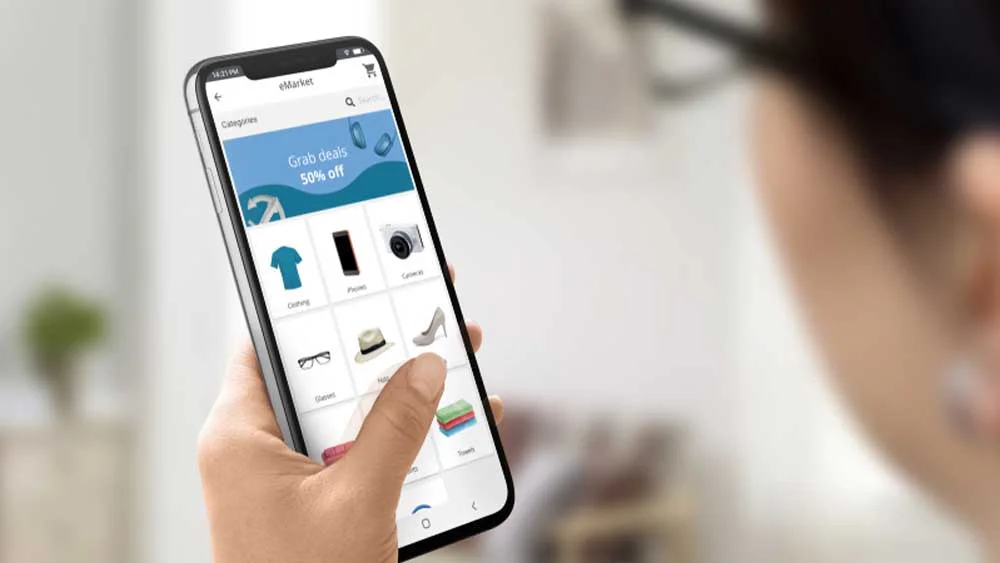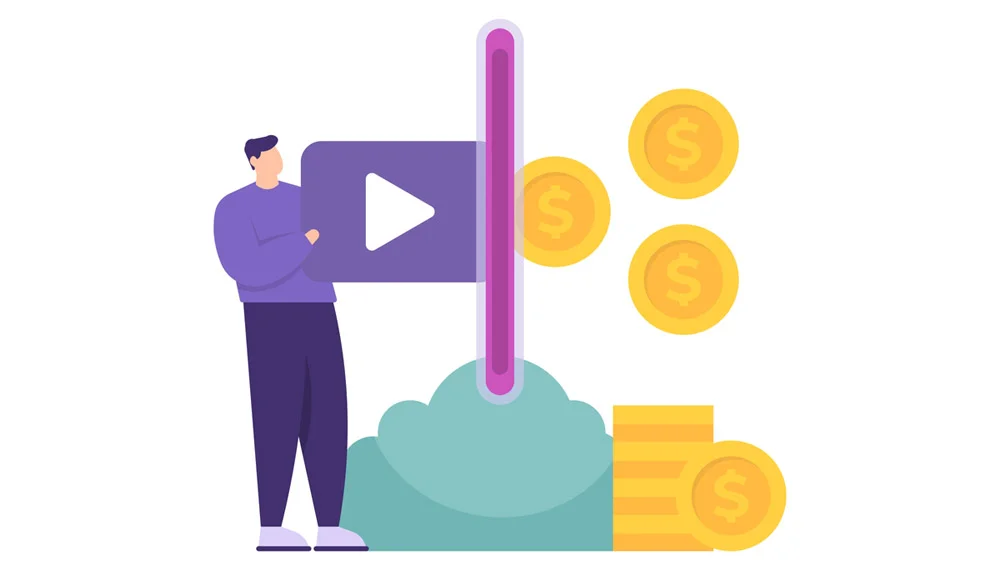Advertisements are something that simply allows us to learn something about something. Whether someone’s advertising for their own clothing brand, accommodation brand, or simply an app of their own. We create ads in order to let people know that this specific name exists. This guide is technical-related, though, which is why I won’t stray. With millions of apps available across various platforms, app ads have emerged as a significant revenue stream. But how much can you actually earn from app ads? My comprehensive guide dives into the world of app monetization, exploring the potential earnings and strategies that can maximize your ad revenue.
App ads come in various forms, including banner ads, interstitial ads, rewarded videos, and native ads. Each one of these options offers unique advantages and revenue potential. Understanding the differences and choosing the right mix is something that you have to do in order to optimize earnings without compromising the user experience. This guide covers key factors influencing ad revenue, such as user engagement, ad placement, and demographic targeting. Furthermore, we’ll delve into real-world case studies and industry benchmarks to provide a clear picture of what you can expect in terms of earnings.
The Importance of Having a Monetization Strategy
Strategies are a necessity I life that people tend to take for granted. They are super crucial, in my humble opinion. You have to have a strategy for everything in your life. Does that mean that you should walk around with a piece of paper and a pencil, designing a strategy for each and every step you take or should take in life? The answer is a big, fat no. Let me put it simply for you.
Having a monetization strategy is like setting a course on a map before embarking on a journey. Without it, even the most innovative app can get lost in the crowd. How so? It can miss out on its true earning potential. A well-crafted monetization strategy ensures that every tap and swipe contributes to your revenue goals, much like how every ingredient in a recipe adds to the final flavor.
Implementing a Monetization Strategy Example
Let me give you an example that demonstrates the previous paragraph. In the gaming world, games often use rewarded videos to keep users engaged while generating income. This is exactly like being a shopkeeper. One that offers free samples that lead to more sales. Similarly, fitness apps might use subscription models. These models provide premium content that users are willing to pay for, like a gym membership. By thoughtfully integrating various monetization methods, developers can create a balanced ecosystem. Where user experience and revenue growth coexist in blessed harmony. One that ensures a sustainable and profitable venture.
The Many Types of Ads: Banner Ads
You know that banner that appears to you in a page that you may open on the internet? One that appears as rectangular graphic at the top or bottom of the screen. These little ads are called banner ads. They are typically non-intrusive and blend seamlessly with the app’s interface. This is something that makes them a favorite among developers. For instance, a news app might use banner ads to display promotions without disrupting the reading experience.
However, because of their unobtrusive nature, banner ads often have lower click-through rates. To maximize their effectiveness, you have to think outside the box. Which means that strategic placement is crucial—during pauses or transitions, like loading screens for example. That is, to catch the user’s attention without detracting from the app’s functionality.
How Much Can You Earn From App Ads? Interstitial Ads
Let me first give you the definition of the word “interstitial” before I begin explaining this type of advertisement. “Interstitial” means filling the gaps between other things. In app ads, interstitials are those full-screen ads that pop up between game levels or activities, giving you a brief pause before diving back in! They are simply full-screen ads that appear at natural transition points within an app.
They demand the user’s attention. Something that makes them highly effective at capturing engagement. Let me give you an example for better demonstration. in a mobile game, an interstitial ad might appear between levels, offering a quick break before the next challenge begins. While these ads can be highly lucrative, they must be used judiciously to avoid frustrating users. Proper timing is key—displaying interstitial ads at moments of low user interaction helps maintain a positive user experience while maximizing ad revenue.
Rewarded Videos
Rewarded video ads offer users incentives. What do I mean by user incentives? Let me tell you. User incentives can be defined as in-game currency, extra lives, or premium content. Ones that you take or gain in exchange for watching a video. Personally, I use them a lot when playing the game Cooking Madness. I know I shouldn’t put myself under such pressure. But seriously, the addiction is real. I always use these rewarded videos to gain extra customers or an extra life. Something that really comes handy and helps you achieve the target of plates served per customer.
Moreover, it provides the right exposure rate for whatever ad you’re watching. Originally, Cooking Madness was on a reward video I watched and I got so interested in the game that I installed it immediately. Rewarded videos are effective because they align the interests of both the developer and the user, enhancing engagement while generating revenue. They provide a win-win scenario—users gain something valuable without spending money, and developers earn from ad impressions and interactions.
How Much Can You Earn From App Ads? Native Ads
So the question remains: how much can you earn from app ads using native ads? Native ads are ones that advertisers designed to blend seamlessly with the app’s content, providing a more integrated and less intrusive advertising experience. They match the look and feel of the app, making them less disruptive and more engaging.
For example, a social media app might incorporate native ads as sponsored posts. Ones that appear in a user’s feed, looking similar to regular content. This approach often leads to higher user engagement and better click-through rates. That is because the ads feel like a natural part of the app. Native ads strike a balance between monetization and user experience, making them a popular choice for many developers.
In-App Purchases and Subscriptions
In-app purchases and subscriptions offer a direct way to monetize apps by allowing users to buy virtual goods, premium features, or access exclusive content. For instance, a photo editing app might offer a subscription for advanced editing tools and filters, while a free-to-play game might sell in-game currency or items.
Subscriptions provide a steady revenue stream, often giving users access to premium content or an ad-free experience. This model works well for apps that offer ongoing value, encouraging long-term user engagement and loyalty. By providing tangible benefits, in-app purchases and subscriptions can significantly boost an app’s revenue potential.
Factors Influencing Ad Revenue: User Engagement and Retention
User engagement and retention are of great importance in determining ad revenue. The longer users stay and interact with your app, the more opportunities there are to serve ads. Engaged users are more likely to click on ads. This will lead to a boost in revenue through higher click-through rates. Let me spin back to yet another mobile game app example. A game that keeps players hooked with compelling content and regular updates can show more ads per session.
This, in my vocabulary, translates into greater earnings. Retention is equally crucial; apps with high retention rates ensure a steady stream of returning users. Which offers a consistent audience for advertisers. Thus, focusing on enhancing user experience and providing valuable content can significantly uplift ad revenue.
Ad Placement Strategies: Where to Implement Your Ads Is Important
Strategic ad placement is an art that directly impacts ad revenue. Placing ads in non-intrusive yet visible spots can enhance user interaction with them. For example, interstitial ads shown between game levels or during natural breaks in content flow can catch users’ attention without disrupting their experience. Banner ads positioned at the top or bottom of the screen, where they remain visible but not obtrusive, can also be effective. Thoughtful placement ensures that ads are seen and interacted with, boosting impressions and clicks. Balancing visibility with user experience is key to maximizing revenue through smart ad placement.
How Much Can You Earn From App Ads? Demographic Targeting
Demographic targeting is when you understand the demographics that you’re addressing. This factor simply allows developers to tailor ads to specific user segments. This helps in enhancing relevance and engagement. By analyzing user data such as age, gender, location, and interests, developers can serve ads that resonate with their audience. For instance, a fitness app targeting young adults can feature ads for trendy workout gear or health supplements.
It can also promote pages that sell trendy sportswear. This precision ensures that ads are more likely to be clicked, increasing revenue. Advertisers are willing to pay more for targeted ad placements, knowing they reach their desired audience, making demographic targeting a powerful tool in boosting ad revenue through increased relevance and effectiveness.
How Much Can You Earn From App Ads? App Category and Niche
The app category and niche significantly influence potential ad revenue. Apps in popular categories like gaming, entertainment, and lifestyle often attract more users, offering higher ad impressions and click-through rates. For example, a mobile game with a vast user base can generate substantial revenue through frequent ad interactions. Which is something that is kind of guaranteed as there are a lot of people, thousands to be precise, who are viewing the ad. Which will at some point cause a few thousand to give it attention and interact with it.
Conversely, niche apps, while having a smaller audience, can command higher ad rates if they cater to a specific, engaged demographic. An app focused on luxury travel, for instance, can attract premium advertisers willing to pay more for access to affluent users. Understanding the dynamics of your app’s category helps tailor monetization strategies to maximize revenue potential.
Wrapping It Up!
Now that you understand all there is to know and understand about app advertisements, let me tell you how you can create an app that you can use to implement this guide and use it efficiently. With nandbox’s native no-code app builder, you can simply create an app in no time. All you have to do is choose an app template that suits your preferences and start optimizing it. You can choose the colors that suit your app vision, create flawless branding, and create a great interface for your app. All without having to use a single line of code. What are you waiting for? Get started now and build a seamless app that you can use to implement an effective app ad strategy.






